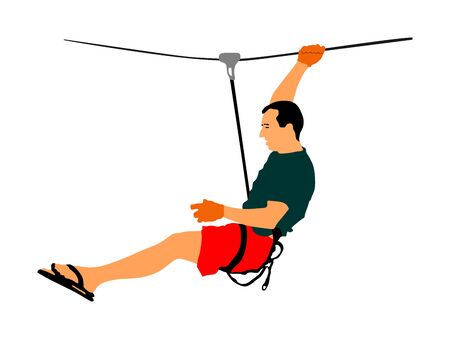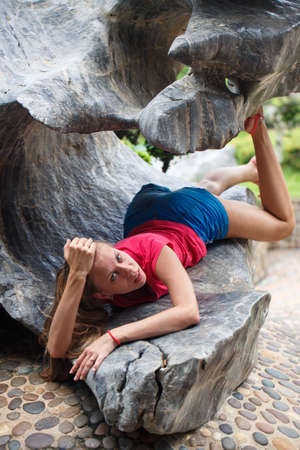1. Introduction to Appalachian Trail Lingo
If you’ve ever found yourself listening in on a conversation between Appalachian Trail hikers, you might feel like they’re speaking an entirely different language. From “NoBo” to “YoYo,” the Appalachian Trail (AT) community has developed its own unique vocabulary over the years. This trail-specific slang isn’t just for fun—it plays a big role in shaping the culture and camaraderie of hikers tackling one of America’s most legendary long-distance trails.
Why Does the AT Have Its Own Slang?
The Appalachian Trail stretches over 2,000 miles from Georgia to Maine, attracting thousands of hikers every year. With so many people sharing the same journey but coming from different backgrounds, having a common lingo helps everyone feel like part of a tight-knit community. These terms are more than just shorthand—they’re badges of honor, inside jokes, and sometimes even words of encouragement that only those “in the know” can fully appreciate.
How Slang Builds Community
Trail lingo helps break the ice and create instant connections between strangers on the trail. When someone says they’re “flip-flopping” or taking a “nero,” others immediately understand their experience and challenges. This shared language helps newcomers integrate quickly, while also providing veterans with a sense of identity and pride.
Common Examples of AT Slang
| Term | Meaning |
|---|---|
| NoBo | Northbound hiker (starting in Georgia, heading to Maine) |
| SoBo | Southbound hiker (starting in Maine, heading to Georgia) |
| YoYo | A hiker who completes the trail in both directions back-to-back |
| Flip-Flop | A hike that starts at one point, goes to another, then flips direction to finish the rest |
| Nero | A day with nearly zero hiking miles—just enough to count as progress! |
| Zero Day | A day spent resting off-trail without any hiking miles logged |
This lingo is ever-evolving, shaped by generations of hikers who have walked before and those who will follow. As we dig deeper into this series, we’ll explore what each term means in detail—and why learning the language of the trail is your first step toward feeling right at home on the AT.
2. Classic Trail Terms: NoBo, SoBo, Flip-Flop, and Beyond
When you set foot on the Appalachian Trail, you’ll quickly notice a unique vocabulary that seasoned hikers use to describe their journeys. Understanding these classic trail terms isn’t just helpful for following conversations—it’s also key to figuring out your own approach and goals on the AT.
NoBo, SoBo, and Flip-Flop: The Big Three
| Term | Full Name | Direction | Description |
|---|---|---|---|
| NoBo | Northbound | Georgia to Maine | The most popular route; hikers start at Springer Mountain in Georgia and head north to Mount Katahdin in Maine. |
| SoBo | Southbound | Maine to Georgia | Hikers begin at Mount Katahdin in Maine and make their way south to Georgia. This approach is less crowded and often considered more challenging at the start. |
| Flip-Flop | – | Mixed/Custom Route | A flexible strategy where hikers start at a midpoint (often Harpers Ferry, WV), head in one direction, then “flip” back to finish the other half in the opposite direction. Great for avoiding crowds or weather extremes. |
The Lingo That Defines Your Journey
NoBo (Northbounder)
If you’re hiking “NoBo,” you’re part of the largest group on the AT. The journey starts in springtime Georgia and finishes with a summer or early fall summit of Katahdin. Expect lots of camaraderie—and crowds—especially during peak season.
SoBo (Southbounder)
A “SoBo” hiker usually kicks off after black fly season in Maine (late June or July). It’s a tougher start but offers quieter trails and a different pace from the get-go. You’ll likely meet NoBos going the opposite direction as you move south.
Flip-Flopper
“Flip-floppers” are all about flexibility. By splitting up their hike, they can tailor mileage, timing, and even crowd levels. Many choose this method to avoid harsh weather or busy shelters during the heaviest traffic months.
Beyond the Basics: Other Directional Terms You Might Hear
- LASHer: Long-Ass Section Hiker—someone tackling big chunks of the AT over time rather than all at once.
- YoYo: A rare breed! These hikers go from one end of the trail to the other and then turn around to hike it back without stopping—a true endurance feat.
- Thru-hiker: Anyone attempting to complete the entire AT within a single calendar year, regardless of direction or starting point.
- Section hiker: Those who break up the AT into smaller segments, often over several years.
Your Trail Identity Starts Here
The terms you adopt—NoBo, SoBo, flip-flopper—aren’t just jargon. They shape your experience on the Appalachian Trail, influence who you’ll meet along the way, and add color to your story as an AT hiker.

3. The Social Side: Trail Names, Trail Magic, and Trail Angels
Trail Names: A Unique Identity on the AT
One of the first things you’ll notice when hiking the Appalachian Trail is that everyone seems to go by a quirky nickname. These are called “trail names,” and they’re an essential part of trail culture in America. Instead of using real names, hikers adopt or are given fun monikers based on their personality, a funny incident, or something unique about them.
| Real Name | Trail Name | How It Might Be Earned |
|---|---|---|
| Sarah | Sunshine | Always smiling, no matter the weather |
| Mike | Barefoot | Loves hiking without shoes |
| Katie | Blaze | Hikes faster than most people on the trail |
| Tom | Socks | Lost his socks on day one and had to borrow some from another hiker |
The Power of Nicknames
Trail names create a sense of belonging and make it easier for hikers to bond. They also help people shed their everyday identities, making the adventure feel even more special.
Trail Magic: Unexpected Kindness Along the Way
If you ask any thru-hiker what kept them going during tough days, many will mention “trail magic.” This term refers to acts of kindness—big or small—that happen unexpectedly on the trail. From coolers filled with cold drinks to home-cooked meals offered at a road crossing, trail magic is all about making someone’s journey a little brighter.
| Type of Trail Magic | Description | Example |
|---|---|---|
| Food & Drinks | Treats left for hikers or handed out by volunteers | A surprise batch of brownies at a shelter, ice-cold sodas at a trailhead |
| Rides & Help | Offering transportation or assistance in emergencies | A ride into town for resupply, help fixing broken gear |
| Moral Support | Encouraging words and friendly conversations from locals or fellow hikers | A local cheering on passing hikers, sharing trail tips and stories around a campfire |
The Spirit of Giving Back
This culture of kindness isn’t just American politeness—it’s part of what makes the Appalachian Trail experience unforgettable. Many hikers become “trail angels” themselves after experiencing trail magic.
Trail Angels: The Heart of the Community
“Trail angels” are the unsung heroes of the AT. These generous volunteers go out of their way to support hikers—sometimes strangers—by providing food, shelter, rides, or other forms of help. Some set up regular stations along popular crossings, while others simply pop up when least expected.
Why Are Trail Angels Important?
- They keep hikers safe and motivated during tough stretches.
- Their support often means the difference between quitting and finishing the journey.
- They embody the uniquely American spirit of hospitality and community found on the Appalachian Trail.
4. From Zeroes to YoYo: Milestones and Unique Achievements
Along the Appalachian Trail, hikers develop their own lingo for every aspect of the journey. Some of the most celebrated—and sometimes quirky—terms are used to describe milestones, rest days, and unique hiking achievements. Here’s a look at a few you’ll hear around campfires and trail towns.
Zero Days: The Art of Doing Nothing
If you’re chatting with thru-hikers, someone will inevitably mention taking a “zero.” A zero day means covering zero trail miles—it’s all about rest and recovery. Whether spent in a cozy hostel, exploring a trail town, or just lounging in camp, zero days are essential for physical and mental health on a long hike.
Common Rest Day Terms
| Term | Meaning |
|---|---|
| Zero Day | No miles hiked; full day off the trail |
| Nero Day | “Near-zero”—a very short hiking day, typically less than five miles |
YoYo: The Ultimate Endurance Feat
If one trip up the AT isn’t enough, try a “YoYo.” This term describes hikers who complete a thru-hike from Georgia to Maine—and then turn around and hike back to Georgia in one continuous journey. It’s an incredible test of endurance and dedication, rarely attempted and even more rarely completed.
Other Notable Trail Achievements
| Term | Description |
|---|---|
| Thru-Hiker | Someone who hikes the entire AT in one season |
| Section Hiker | A hiker completing the AT over multiple trips or seasons |
| LASHer (Long-Ass Section Hiker) | A section hiker tackling especially long sections at once |
| Flip-Flopper | A hiker who starts at one point, hikes to another end, then flips to finish the other half in the opposite direction |
| YoYo Hiker | A hiker who completes a round-trip—northbound and southbound—in one journey |
| Triple Crowner | An elite hiker who has finished the AT, Pacific Crest Trail, and Continental Divide Trail |
The Culture Behind the Terms
The unique language of Appalachian Trail hikers celebrates not just endurance but also adaptability and creativity. Whether you’re planning your first zero day or dreaming of becoming a YoYo legend, these milestones highlight the diversity of experiences on America’s most iconic long-distance footpath.
5. Embracing the Lingo: Why Speaking Trail Matters
When you set foot on the Appalachian Trail, you’re entering more than just a long-distance hiking path—you’re stepping into a vibrant community with its own language. The unique slang and phrases used along the AT aren’t just for fun; they play a big role in shaping your experience, whether you’re a first-time hiker or a seasoned “thru-hiker.”
Building Identity Through Trail Talk
The moment someone calls you a “NoBo” (northbound hiker) or “YoYo” (someone who hikes the entire trail both ways in one season), you become part of something bigger. Trail lingo isn’t just about abbreviations—it’s about identity. Using and understanding these words marks you as someone who belongs to the AT culture. It’s like wearing a badge that says, “I get it—I’m one of you.”
How Lingo Fosters Community
Hikers on the AT come from all over the country and beyond, but when they use trail lingo, barriers come down fast. You might strike up a conversation at a shelter by sharing your latest “zero day” (a day with no hiking) plans or swapping stories about “trail magic” (unexpected kindnesses from strangers). This shared vocabulary helps break the ice and makes everyone feel welcome—even if it’s your very first week on the trail.
Common Trail Terms and Their Meanings
| Term | Meaning |
|---|---|
| NoBo | A hiker traveling northbound from Georgia to Maine |
| SoBo | A hiker traveling southbound from Maine to Georgia |
| YoYo | A hiker who completes the trail in both directions without stopping |
| Zero Day | A day spent resting with no miles hiked |
| Nero Day | A day with very few miles hiked (nearly zero) |
| Trail Magic | Acts of kindness or unexpected treats found on the trail |
| Trail Name | A nickname given to hikers, often based on personality or events on the trail |
Lingo as a Tool for Newcomers and Veterans Alike
If you’re new to the AT, learning some key terms can help you fit in faster and navigate conversations with ease. Don’t be afraid to ask what something means—most hikers are happy to share their knowledge! For experienced hikers, using trail lingo is second nature; it deepens connections and makes every return trip feel like coming home.
The Impact of Language on Your Trail Experience
Speaking “trail” doesn’t just help with directions or logistics—it changes how you see yourself and those around you. Suddenly, you’re not just another person out for a hike; you’re part of an adventurous tribe with its own stories, traditions, and inside jokes. Whether you’re swapping tales at a campfire or leaving encouraging notes for others at a shelter, using trail lingo keeps you plugged into the heart of Appalachian Trail culture.


